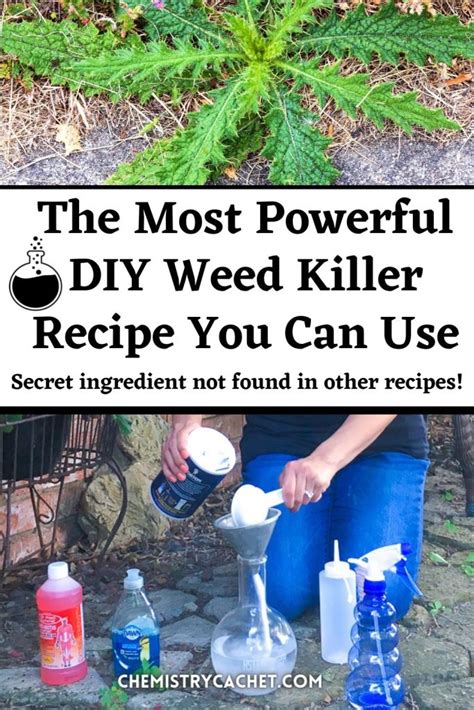DIY Weed Killer Recipes: Safe and Effective Ways to Banish Unwanted Plants
Are you tired of battling weeds in your garden or lawn? Store-bought weed killers can be expensive and contain harsh chemicals that can harm the environment and your pets. Fortunately, there are several effective and eco-friendly DIY weed killer recipes you can make at home using common household ingredients. This guide explores several options, explaining their effectiveness and safety precautions.
Understanding Weed Control: The Basics
Before diving into recipes, it's crucial to understand the different types of weeds and how they thrive. Knowing your enemy helps you choose the right approach. Some weeds are annuals (living only one season), while others are perennials (returning year after year). Understanding their lifecycle dictates the best weed control strategy. For example, persistent perennial weeds often require a different approach than quick-growing annuals.
DIY Weed Killer Recipes: A Roundup of Natural Solutions
Here are a few effective DIY weed killer recipes you can try:
1. Boiling Water: The Simple and Effective Solution
This method is best for small weeds and freshly sprouted ones. Simply boil a kettle of water and carefully pour it directly onto the weeds, ensuring the leaves and stems are thoroughly saturated. This method works by shocking the weeds' systems, effectively killing them.
Pros: Cheap, readily available, environmentally friendly. Cons: Not effective on established weeds or large infestations. Requires careful application to avoid harming surrounding plants.
2. Vinegar Weed Killer: A Powerful Natural Option
White vinegar (5% acidity or higher) is a surprisingly effective weed killer. The acetic acid in vinegar disrupts the weed's cellular processes, leading to its demise.
Recipe:
- 1 gallon white vinegar (5% acidity or higher)
- 1 tablespoon salt (optional, enhances effectiveness but can harm soil over time)
- 1 tablespoon dish soap (helps the mixture adhere to the leaves)
Mix all ingredients in a spray bottle and apply directly to the weeds, avoiding contact with desired plants. Repeat as needed.
Pros: Relatively inexpensive, readily available, biodegradable. Cons: Can damage surrounding plants if not applied carefully. May require multiple applications for persistent weeds.
3. Baking Soda Weed Killer: A Gentler Approach
Baking soda is a less aggressive option, making it suitable for sensitive areas or when you want to avoid harming beneficial insects.
Recipe:
- 1 cup baking soda
- 1 gallon water
Mix the ingredients and spray directly onto the weeds. This method works by disrupting the weeds' photosynthesis process.
Pros: Gentle, relatively safe for surrounding plants.
- Cons: Less effective than vinegar or boiling water, may require multiple applications.
Tips for Effective Weed Control:
- Timing is Key: Apply any DIY weed killer on a sunny day to maximize effectiveness. The sun helps the solution dry quickly and penetrate the plant.
- Targeted Application: Always try to apply the solution directly to the weeds, minimizing contact with desirable plants.
- Persistence is Crucial: Most DIY weed killers require multiple applications for complete weed eradication, especially for persistent weeds.
- Preventative Measures: Mulching around plants helps suppress weed growth. Regular weeding prevents weeds from becoming established.
Safety Precautions:
- Wear protective gloves and eyewear when applying any DIY weed killer.
- Keep children and pets away from treated areas until the solution has dried completely.
- Avoid spraying on windy days to prevent the solution from drifting onto unintended plants.
Remember, while these DIY weed killers are generally safe, always test a small area first before applying them liberally. Consistent application and preventative measures will yield the best results in keeping your garden weed-free.

